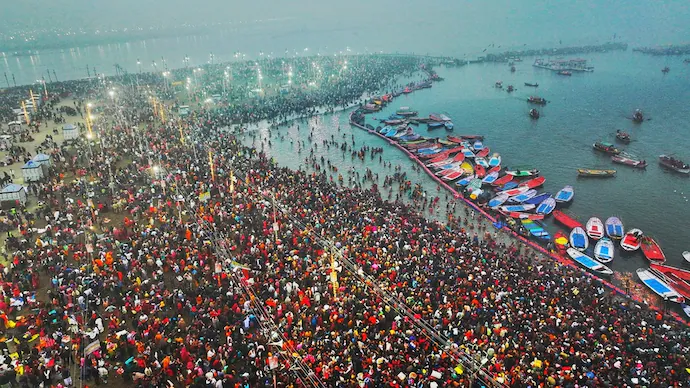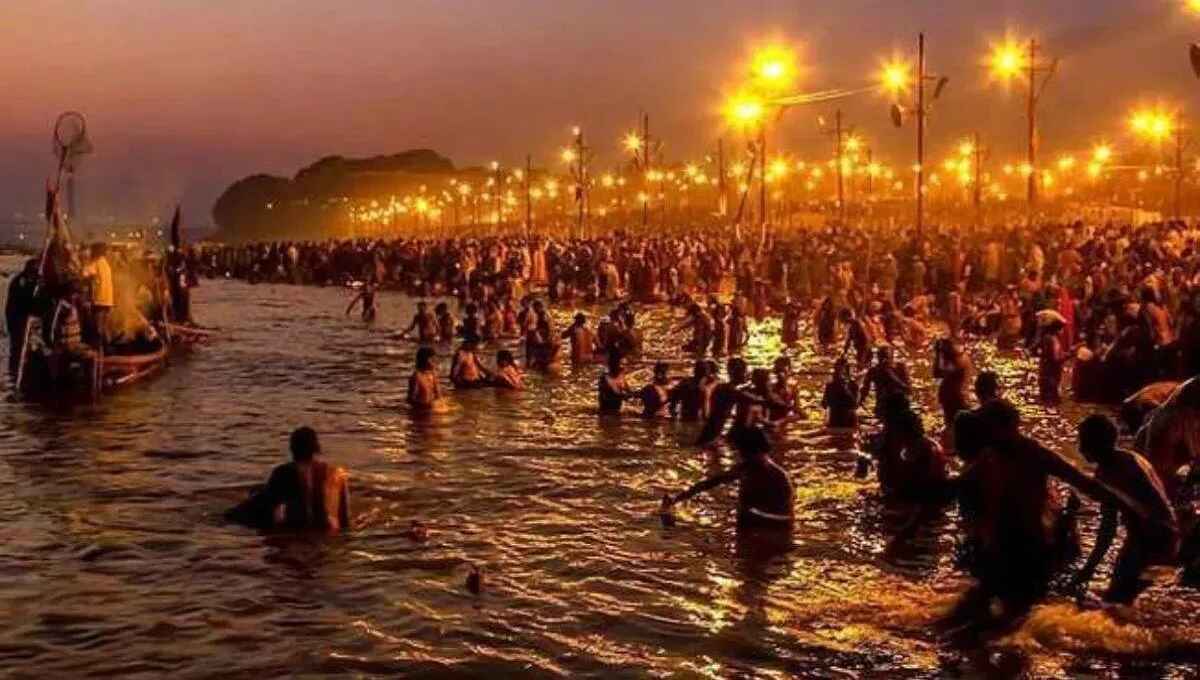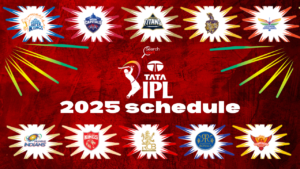Makar Sankranti 2025 : Maha Kumbh Mela Amrit Snan
The Maha Kumbh Mela in Prayagraj witnessed an unprecedented turnout this year, with over 4 crore (40 million) devotees taking a holy dip at the Sangam on Makar Sankranti. This event marked the first ‘Amrit Snan’ (nectar bath) of the festival, symbolizing purification and spiritual renewal. Devotees takes bath with different types of weapons like “trishul,sankha, dagger, small sword, or small drums” as this event has a unique significance. Makar Sankranti marks the Sun’s transition into the zodiac sign Capricorn (Makar), signifying the start of Uttarayan (the Sun’s northward journey).




Every year during mid january people of India mainly hindus celebrate this event but this year the event was very special as it was a very rare astrological phinomina that happens every 144 years. All the planets aligned in one line makeing it the unique “Makar Amrit” yog. More details about the yearly events has shown below
Notable Engagements of Maha Kumbh Mela

The event was so special that it got international engegement. Laurene Powell Jobs, widow of Apple co-founder Steve Jobs, attended the Maha Kumbh Mela to fulfill her late husband’s desire to experience the spiritual gathering.Express the dsire that also written in a a letter by Steve Jobs, expressing his intent to visit the Kumbh Mela, was recently auctioned for ₹4.32 crore. Union Home Minister Amit Shah celebrated Makar Sankranti by participating in kite flying events in Gujarat. His involvement underscores the cultural significance of the festival and its role in promoting community bonding
Explaining the astronomical phenomenon
Every 144 years, Makar Sankranti aligns with a rare astronomical event linked to the Sun’s gradual shift due to the Earth’s axial precession (the wobbling of Earth’s axis). Over centuries, this precession causes the Sun’s entry into Capricorn to drift slightly. In the 144-year cycle:
- The timing of Uttarayan (Sun’s northward journey) undergoes a noticeable adjustment.
- It is accompanied by enhanced spiritual energy, according to Vedic astrology, making this particular Sankranti a powerful time for rituals and transformative practices.
1. Annual Events on Makar Sankranti
- Maha Kumbh Mela: Held every 12 years, this pilgrimage rotates between four sacred locations—Prayagraj, Haridwar, Nashik, and Ujjain. The Maha Kumbh Mela held during Makar Sankranti is the most auspicious for spiritual bathing and rituals.
- Solar Eclipse: In some years, Makar Sankranti coincides with a solar eclipse, adding a mystical dimension to the celebrations.
2. 60-Year Jupiter Cycle
Every 60 years, Jupiter (Guru) aligns with the Sun during Makar Sankranti, amplifying the festival’s spiritual significance. This alignment enhances opportunities for prosperity, success, and spiritual growth.
3. 12-Year Kumbh Cycle
Makar Sankranti often coincides with the Kumbh Mela, held every 12 years at a specific location. The Ardha Kumbh Mela, which occurs every six years, also aligns with the festival, attracting millions of pilgrims.
4. Saros Cycle and Eclipses
Solar eclipses follow the Saros cycle, repeating approximately every 18 years. If an eclipse coincides with Makar Sankranti, it is considered a highly auspicious and rare event.
5. Sidereal Year Adjustments
Over time, the timing of Makar Sankranti has shifted due to the Earth’s precession. This causes the date of the festival to slightly drift forward in the Gregorian calendar every few centuries.
Major Locations for Makar Sankranti Celebrations

1. Prayagraj, Uttar Pradesh (Maha Kumbh Mela)
- The Sangam (confluence of the Ganga, Yamuna, and Saraswati rivers) is considered the most sacred site for taking a holy dip during Makar Sankranti.
- Maha Kumbh Mela or Ardha Kumbh Mela is held during this time.
- Millions of pilgrims participate in the Amrit Snan (nectar bath) for spiritual purification.
2. Haridwar, Uttarakhand
- Har Ki Pauri ghat along the Ganga river is a major site for holy dips.
- Grand aarti (prayer) ceremonies.
- Devotees take a dip in the sacred river to cleanse their sins.
3. Gujarat (International Kite Festival)
- Gujarat hosts the iconic International Kite Festival in cities like Ahmedabad and Surat.
- Skies filled with colorful kites symbolizing joy and freedom.
- Participants from around the world showcase creative kite designs.
4. Tamil Nadu (Pongal Festival)
- Tamil Nadu celebrates Makar Sankranti as Pongal, a four-day harvest festival.
- Traditional Pongal rice offerings to the Sun God.
- Bull-taming sport Jallikattu in rural areas.
5. Assam (Magh Bihu)
- Celebrated as Magh Bihu, it marks the harvest season’s end.
- Community feasts and bonfires.
- Traditional games like buffalo fights and dancing.
6. Punjab and Haryana (Lohri)
- Lohri is celebrated as the harvest festival in North India, especially in Punjab and Haryana.
- Bonfires and folk dances like Bhangra and Gidda.
- Distribution of til (sesame), gud (jaggery), and peanuts.
7. Maharashtra
- Makar Sankranti is marked by the exchange of til-gud (sesame-jaggery sweets).
- Women organize Haldi Kumkum gatherings.
- Cultural programs and community feasts.
8. Rajasthan and Uttar Pradesh (Kite Flying)
- Jaipur and Varanasi host massive kite-flying events.
- Competitions and celebrations with vibrant kites.
- Markets bustling with kite and manjha (kite string) sales.
9. West Bengal (Ganga Sagar Mela)
- Celebrated at the confluence of the Ganga River and the Bay of Bengal.
- Second largest pilgrimage gathering after the Kumbh Mela.
- Holy dips and prayers by the devotees.
10. Karnataka and Andhra Pradesh (Makara Sankramana)
- Celebrated with a mix of spiritual and cultural activities.
- Preparation of sweet dishes like Ellu-Bella in Karnataka.
- Prayers and community feasts in Andhra Pradesh.



